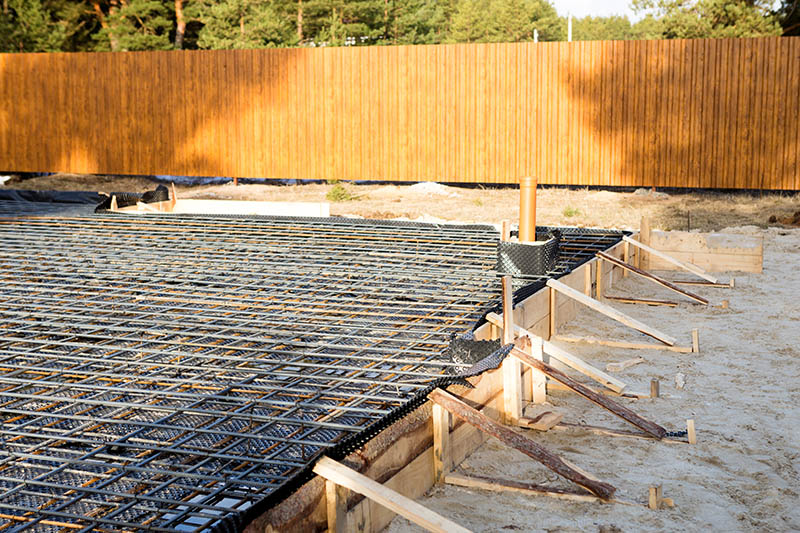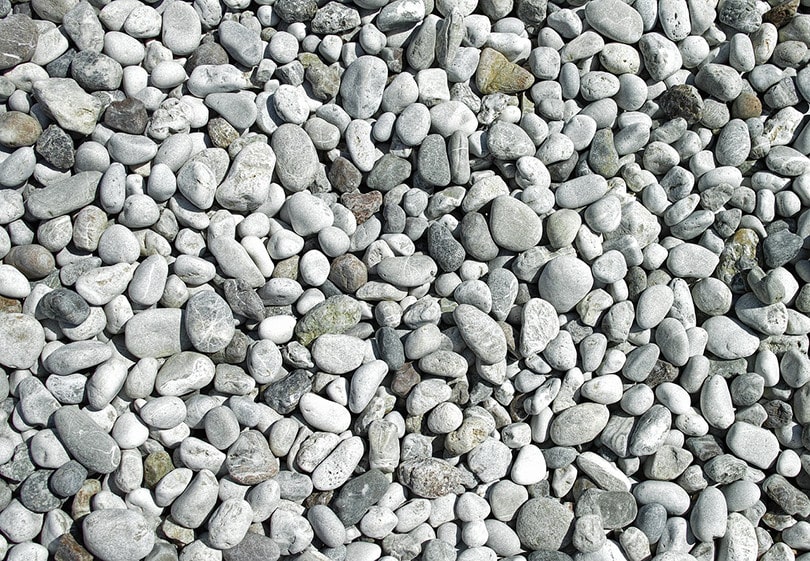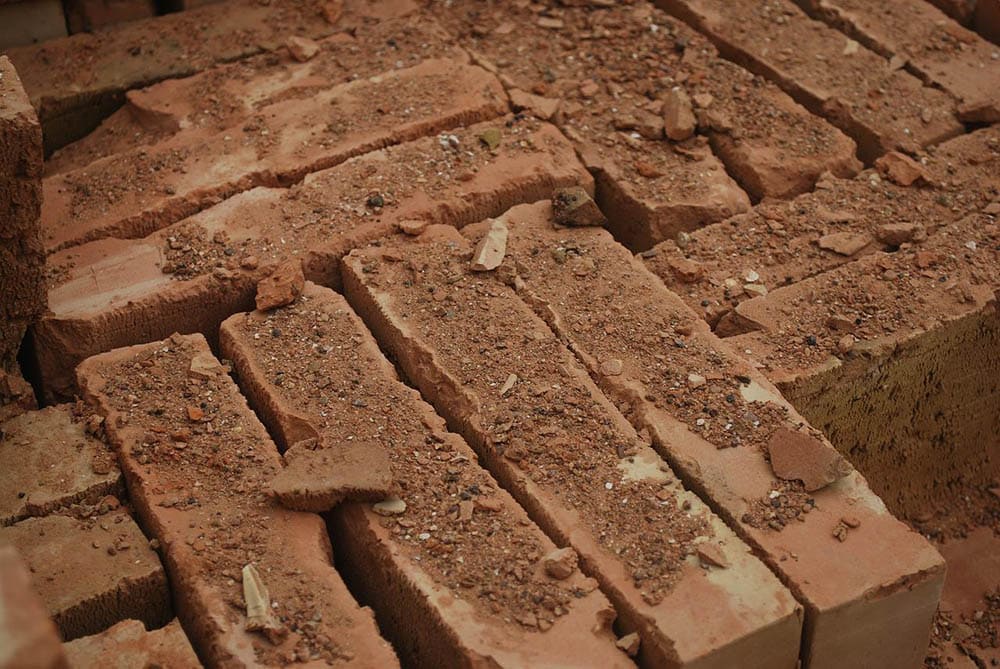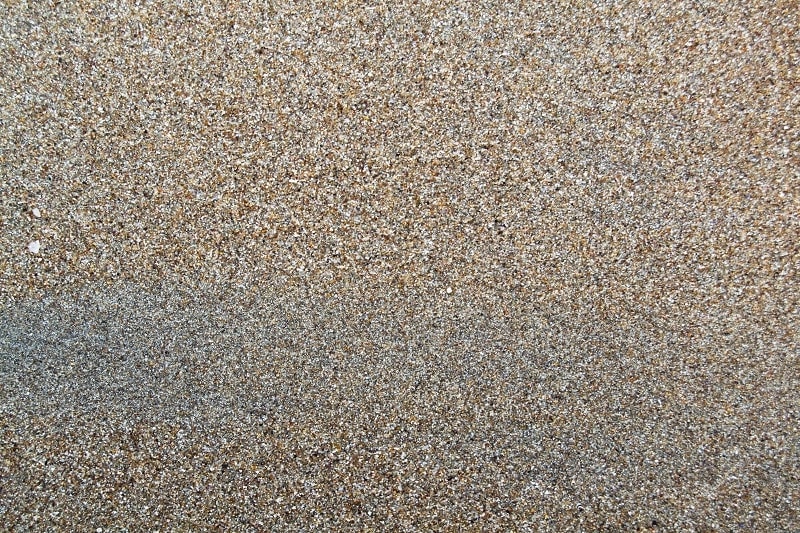What Is the Best Base for a Concrete Slab? Facts, Alternatives, & FAQ
-

- Last updated:

The type of foundation you lay when building a home plays a huge role in the strength of the completed structure. A good foundation has to begin with the material put under a concrete slab. In general, gravel is the most ideal base material for concrete slabs.
While there are other alternatives, this article explains what makes crushed gravel the most ideal material for concrete slabs. We also guide you through the process of setting up gravel bases and why it is necessary to do so. Keep reading!
What Is the Best Base for a Concrete Slab?
A subbase is the section of a building foundation that separates the concrete slab from the existing soil (subgrade). In most cases, this construction layer is made of crushed stone material and acts as a support between the slab and dirt. By doing so, it prevents the concrete base from cracking.
- Minimizes Settling Dirt: The dirt below your concrete slab is in constant gradual motion. Since this may force the concrete slab to crack, the layer of gravel comes in handy, absorbing the movement of the existing soil.
- Improves Drainage: Can you imagine what happens after pouring concrete on dirt? You guessed it—the concrete will wash away the dirt and sink into the soil before cracking. Thankfully, a layer of gravel helps support the slab by absorbing the runoff, thus keeping it from cracking.

Why Use Gravel as a Subbase?
It is necessary to ensure concrete subbases are sturdy and stable. This is especially true when designing driveways since extremely cold weather may affect the stability of the concrete slabs when heavyweight vehicles are parked on them.
Depending on what you are building your foundation for and the base material, the thickness of the subbase layer should range from 4–12 inches. However, 6 inches is recommended for crushed stone bases.
Gravel works better than other materials. For example, unlike sand, gravel creates more compactness that enhances good drainage. The ACI 302 guidelines¹ stipulate that the base coarse material must be easily trimmable, compatible, and have a granular fill that remains solid for a long time. It also explains that the best materials should have minimal traces of silt, clay, or organic materials. It is safe to say that gravel checks all the boxes.
In addition, gravel enhances the concrete volume because it serves as an aggregate and a filler. Let’s assume you neglect to add a layer of gravel and decide to pour the concrete directly into the subgrade. What will happen? Well, the answer is very simple. Considering that concrete is highly porous, it will continually absorb any moisture it comes in contact with. To create a barrier between the soil and the concrete that enhances drainage, it is essential to add a layer of crushed stones.
Best Type of Gravel to Use as a Subbase
Washed and screened gravel¹ is the best type to put beneath concrete slabs. Ideally, the gravel should measure ¾–1 inch in size.
While larger gravel can still work well, compacting and leveling it can be quite troublesome. It could also be too porous for some types of concrete, meaning it’ll require more of it. This rules out the possibility of estimating the amount of concrete needed.
Washing the gravel is necessary as it prevents “wicking,” which is what happens when water reaches the slab after moving through the gravel. This can be possible because of the excessive amounts of dust contained in unwashed gravel.
On the other hand, screening gets rid of too small of particles that may also play a role in wicking moisture. While ½-inch gravel particles can work excellently, it is essential to wash them first.

How Much Gravel Do You Need for Your Subbase?
If your concrete slab is 4 inches thick, you will need a 3-inch layer of gravel beneath it. While this is just the minimum, it is advisable to add more gravel to make the foundation sturdier. Ensure it is washed, screened, and compacted to level.
As you add more gravel, remember to compact it using a plate compactor or a compacting machine every 5 inches. Also, if you opt to use rigid foam boards below the concrete slab, it is imperative to maintain the required subbase thickness. For example, if you lay 2 inches of rigid foam, you will still require 3 inches of gravel beneath it for maximum support.
How to Compact a Gravel Subbase
Using a compacting machine to close-pack your gravel subbase is the best option to settle for. Besides being more efficient, a jumping jack or plate compactor does the job in a fraction of the time it would take a hand compactor.
Consider re-compacting the layer of gravel if the thickness exceeds 5 inches. By doing so, you ensure compaction throughout the bed of the crushed gravel, thus boosting the support.
If you don’t have a compacting machine, you should check with your local rental store – they rent and charge them by the hour. Depending on the size of your foundation, the compacting process can take the whole morning or some hours into the afternoon. However, by comparison, the cost of compacting gravel using a machine is reasonable because machines are more effective and time-efficient than manual tools.


Alternatives to Gravel Subbase
According to The American Concrete Institute¹, using materials such as gradation sheets is highly recommendable because they provide the grade required for subbases. Your local store should provide you with certified alternatives for your subbase needs. As such, it is important to check with them before settling on other options.
Let’s take a quick look at some of the alternatives used out there.
Brick Pieces
Most people think about walls when it comes to using bricks in construction. However, damaged pieces of brick can also be used to create a sub-base when building the foundation.
You must note that bricks aren’t as effective as gravel or crushed stones because they may let in water over time. As such, it is recommended to use them in hot or relatively warm areas, and for small building foundations only.
When using crushed bricks as a subbase, it is important to use as much of them as possible. Also, it makes greater sense to mix with some stones to boost their drainage efficiency. Nonetheless, bricks are unreliable subbase material.

Crushed Concrete
You can also use crushed concrete as an aggregate for your base. This material is made using the same materials as concrete but has been crushed into minute pieces. By comparison, crushed concrete is more cost effective than traditional concrete.
However, like crushed bricks, it is not recommended to use them as a subbase. Why? Because crushed concrete can still let up moisture like concrete. For this reason, you should only use it when constructing small buildings and home driveways.
Sand
Some people use sand to provide support between the subgrade and concrete slabs. Unfortunately, they fail to understand that sand isn’t sturdy enough to act as a subbase material. It may work just as fine, but its high mobility when tamped down rules it out of the options. Also, maintaining a level surface may prove quite hard, and this affects the uniformity of the concrete slab thickness.


Conclusion
Pouring a slab is not only tiresome but also time-consuming. Still, anything that lasts more than 5 years doesn’t require substandard work. For this reason, you should take your time while building the foundation and spend some money on installing a layer of gravel.
Unlike other slab base materials, gravel has the best grade that guarantees proper drainage and minimizes settling dirt. Also, gravel acts as a filler, meaning it will save you from spending more on concrete.
For additional measures against shifting and cracking, you can consider adding a foam barrier on top of the compacted rocks to aid in absorbing the minimal moisture that manages to the top of the subbase. Then, you can be sure the building will last you a lifetime.
We hope this article provides you with insightful information. Good luck pouring your slab!
- Related Reads: What Is Builder’s Sand? (Different Types & FAQs)
Featured Image Credit: Simol1407, Shutterstock
Contents
